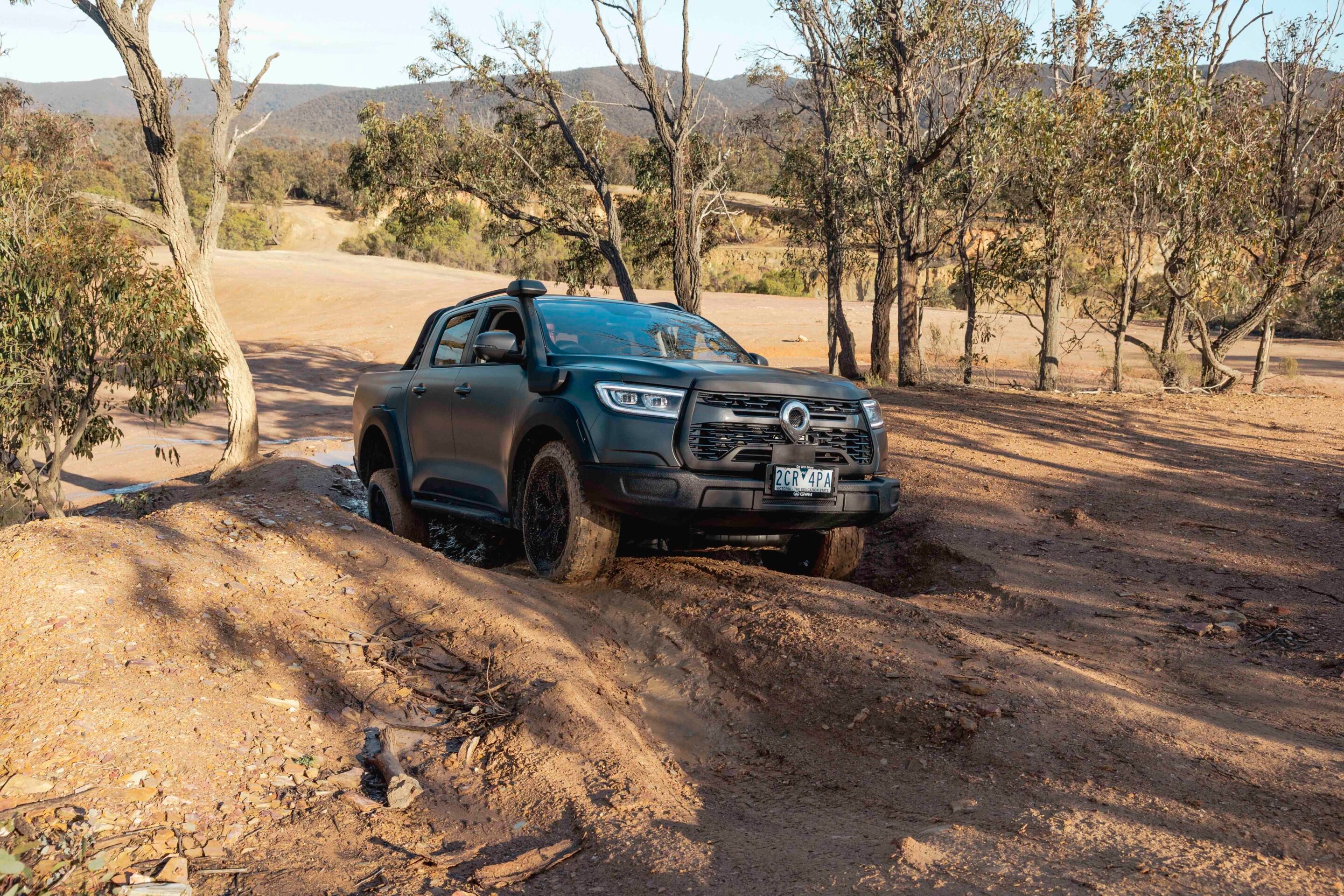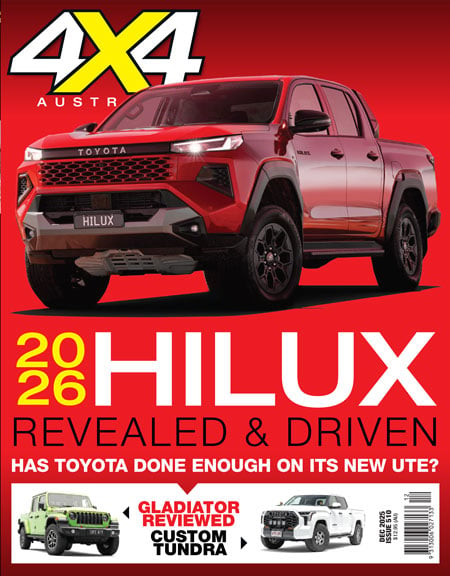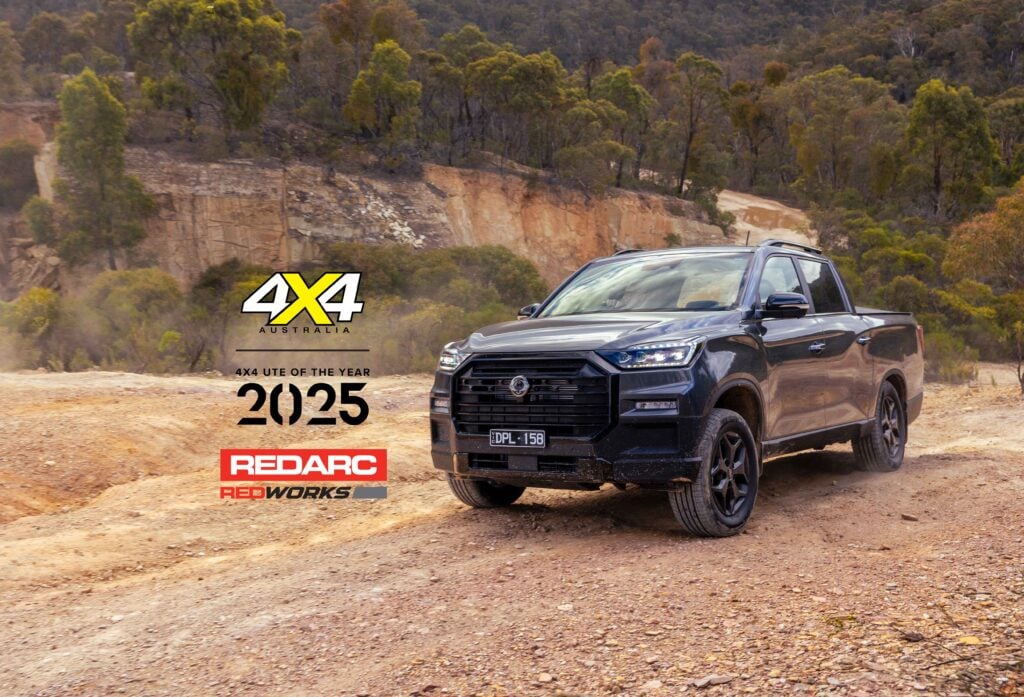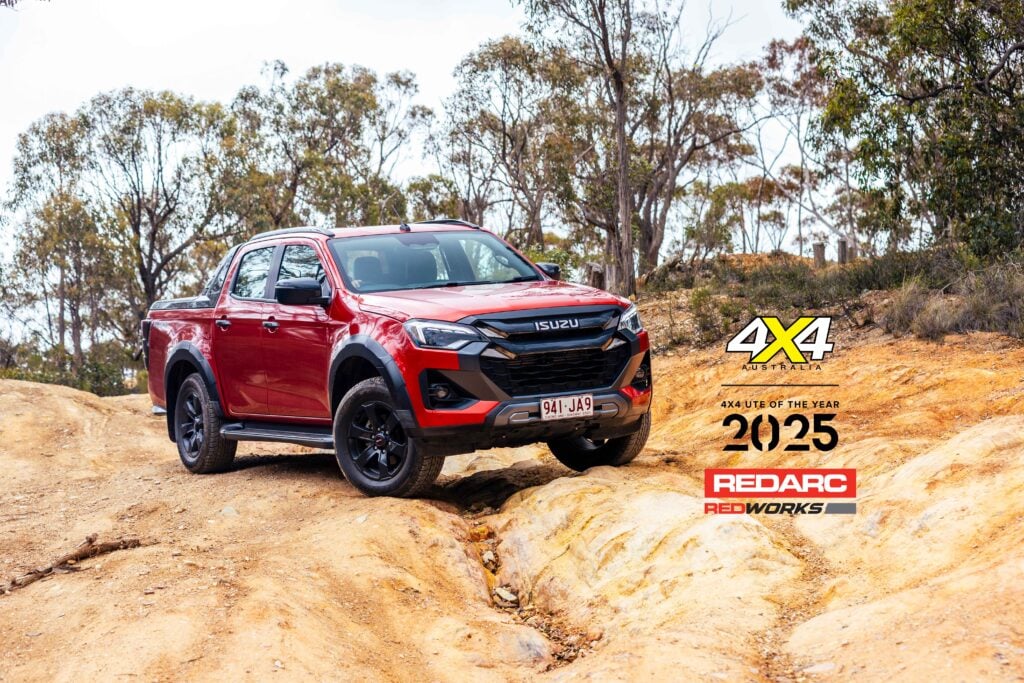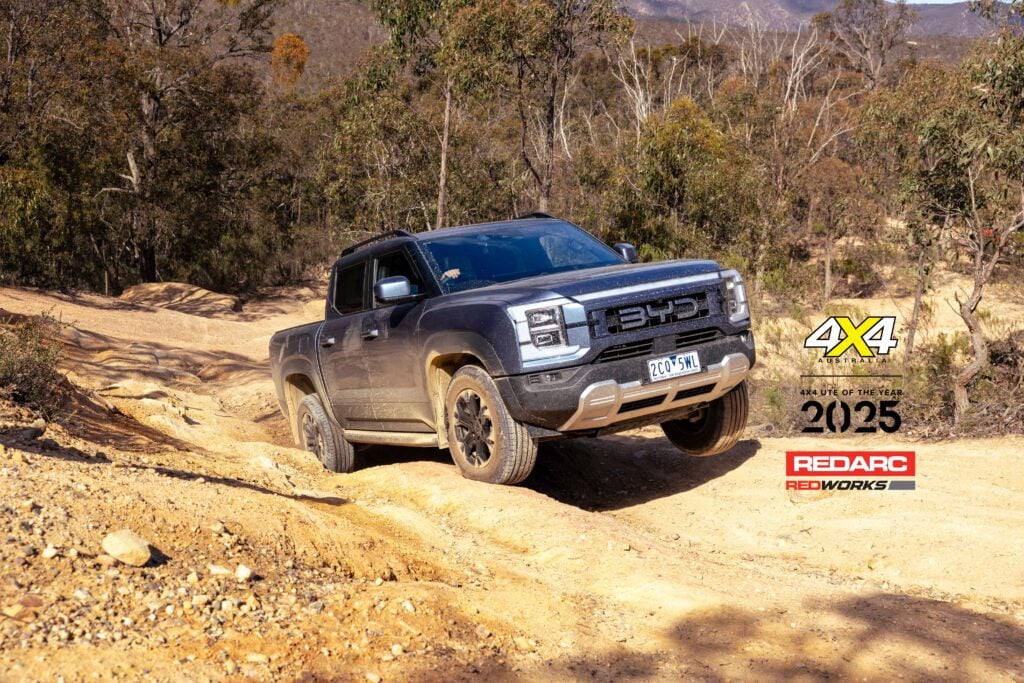Things we like
- Supportive seats
- Front and rear lockers standard
- Cheap price
Not so much
- Throttle/engine calibration
- Harsh suspension
- Missing safety tech
GWM (formerly Great Wall Motors) gave its Cannon ute a significant update at the start of 2025.
The headline changes included a larger 2.4-litre diesel engine, an increased towing capacity, and a new flagship variant – the Cannon XSR – aimed squarely at off-road buyers. Six months on, we finally get our first crack behind the wheel of the $50K XSR.
Off-roaders will welcome the arrival of a budget-priced midsize ute with front and rear diff locks straight from the factory. Lockers give any 4×4 a far better chance of tackling rough terrain by ensuring equal drive is sent to all four wheels simultaneously. The only other utes in this segment with that spec are the $90K Ford Ranger Raptor and the Cannon’s own bigger sibling, the Cannon Alpha. In the XSR, you’re getting the hardware at a $50K drive-away price.
That’s the good news about the XSR. The downside? It ditches the full-time 4×4 system in favour of a part-time setup and misses out on key safety features including Emergency Lane Keeping, Smart Dodge, Blind Spot Detection, Rear Collision Warning and the Door Open Warning system. Because of these omissions, the Cannon XSR hasn’t been tested with ANCAP and doesn’t carry the five-star safety rating earned by other models in the Cannon range.
We’re sure plenty of buyers would gladly trade some safety tech for front and rear lockers, but for others, that compromise will be a deal breaker. Horses for courses.
JUMP AHEAD
What does it get?
As well as the locking diffs and part-time 4×4 system, the XSR scores Cooper all-terrain tyres, an air intake snorkel, steel side steps, additional drive modes and a model-specific grille. You can add as many off-road drive modes as you like, but once you’ve got proper locking diffs like the XSR does, most of them become redundant – lockers are the ultimate off-road drive mode.
The off-road hardware adds to an already well-specified ute, which includes leather-trimmed seats with heating and ventilation up front, six-way power adjustment for the driver and four-way for the passenger, a heated steering wheel, and a 360° camera system displayed on a 12.3-inch touchscreen with wireless Apple CarPlay and Android Auto. There’s also a wireless phone charger, power sunroof, seven airbags and a tyre pressure monitoring system (TPMS).
The 2025-spec 2.4-litre diesel engine is borrowed from the larger Cannon Alpha and is paired with a nine-speed automatic transmission. The single turbo unit produces a claimed 135kW at 3600rpm and 480Nm between 1500-2500rpm.
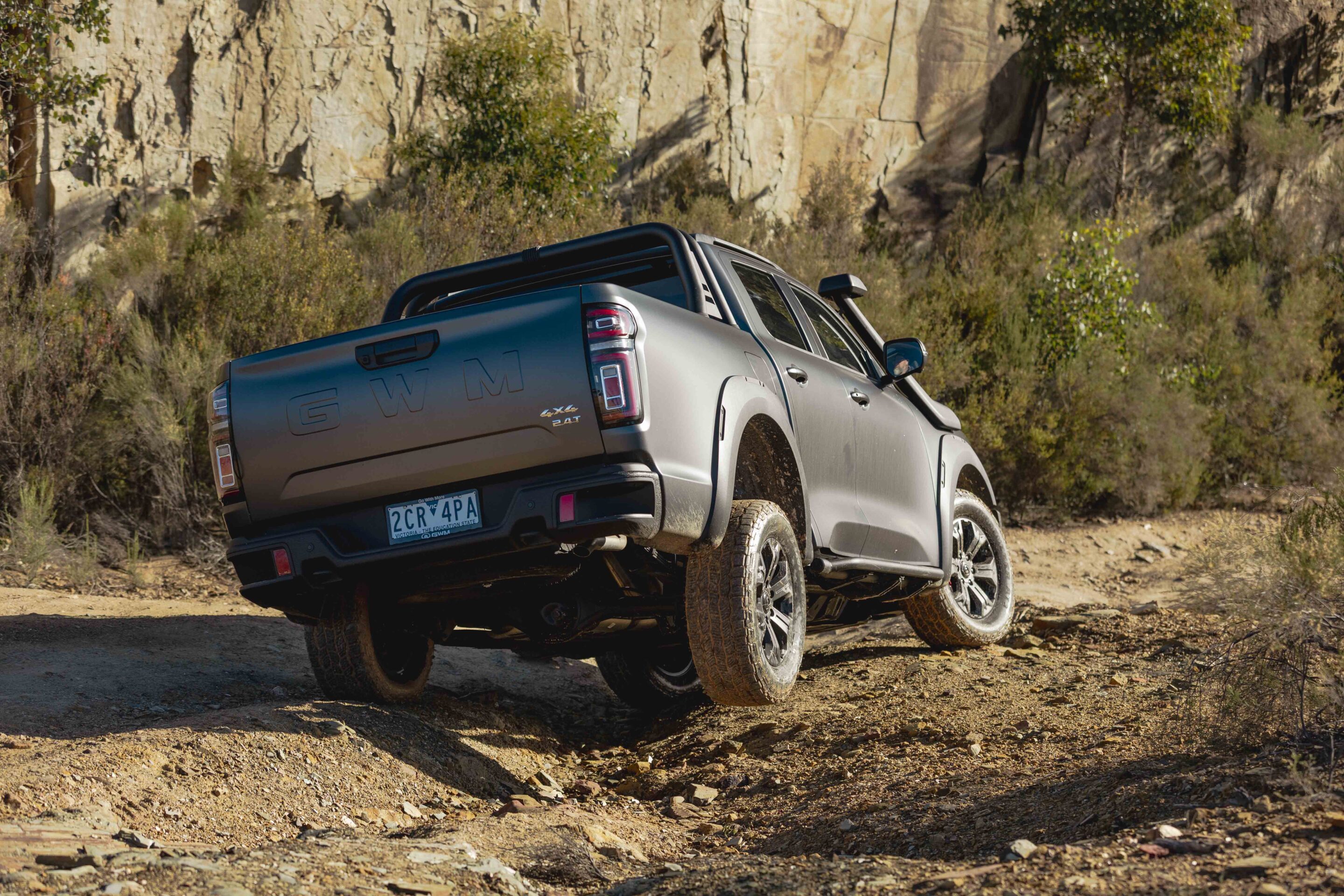
On-road performance
While the power and torque figures aren’t class-leading, the Cannon moves along briskly when you put your foot down. But the issue isn’t the peak outputs – it’s how the engine delivers them.
There’s a noticeable amount of throttle and turbo lag from the engine. Prod the accelerator and there’s a moment’s hesitation before boost arrives in a rush, often prompting the driver to back off just as quickly. This delay can be disconcerting when pulling into traffic, making smooth throttle application essential for a clean getaway. Combined with the switch to a part-time 4×4 system – meaning no all-wheel drive on sealed roads – negotiating wet Melbourne streets becomes a learned skill.
The engine features a single variable-geometry turbocharger, intended to deliver a smoother and more progressive application of boost. However, something feels amiss in this setup – whether it’s the turbo itself, the engine tuning, or the throttle calibration, the end result is far from seamless.
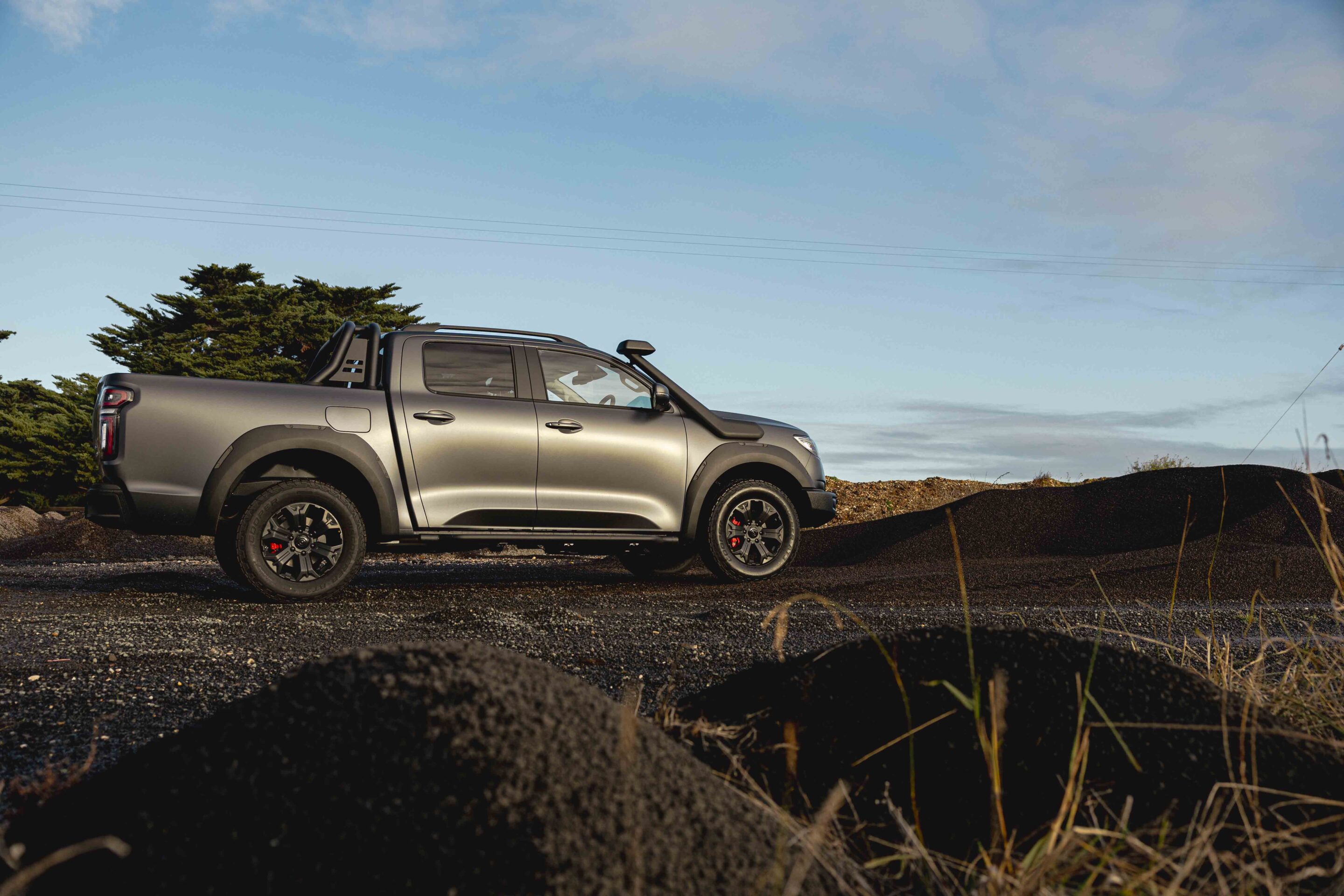
As for the throttle calibration, even maintaining a steady 20km/h in crawling city traffic can be a chore. The Cannon tends to surge and ebb, making smooth, consistent low-speed driving more difficult than it should be.
There’s nothing to complain about with the nine-speed automatic, and the inclusion of manual shift paddles behind the steering wheel is a bonus. Less impressive is GWM’s ‘aviation-inspired’ gear selector – a case of change for change’s sake that over-complicates what should be a simple function. That said, GWM isn’t alone in this trend.
Interior refinement
While we’re in the vicinity of the shifter, it’s worth mentioning the surrounding console. To the right are three pre-wired accessory switches, ideal for things like auxiliary lights. On the left are dedicated buttons for the front and rear diff locks, along with the tank-turn function. Selecting 4×4 high or low range is handled via the drive mode dial.
While it’s great to have the off-road controls placed for easy access, it’s frustrating that more frequently used functions – like climate control – are buried in the multimedia screen. These everyday adjustments would be far more intuitive and safer to operate using physical buttons or dials, rather than navigating screen menus. Once again, GWM isn’t alone in this trend of overcomplicating commonly used cabin functions.
The seats themselves are excellent, offering impressive back support and overall comfort. They’re among the best I’ve experienced in any OE offering – and easily the best at this price point.
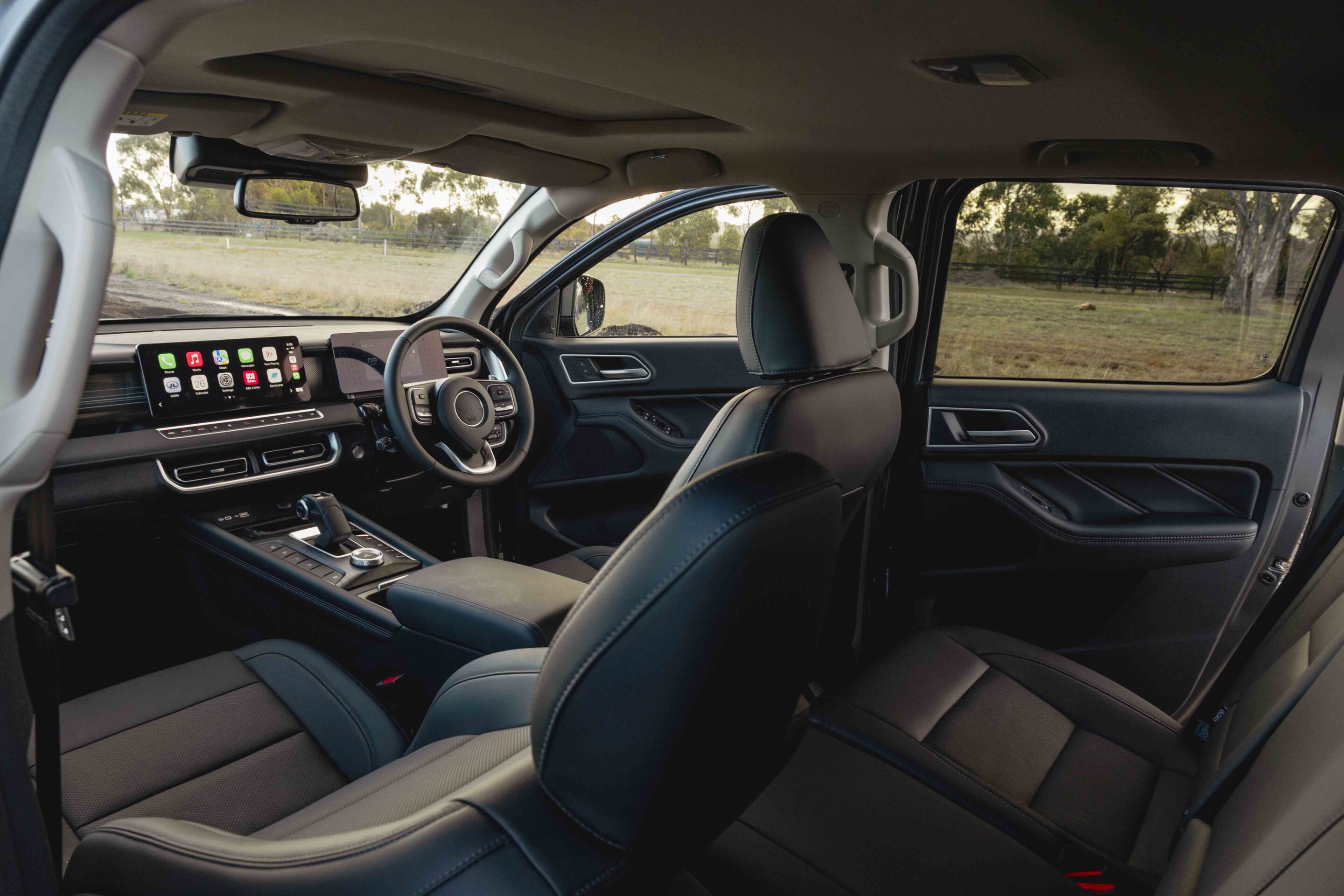
Off-road performance
With its triple-locked driveline, we were keen to put the Cannon’s off-road ability to the test. Recent rain had us questioning whether our regular test loops might be too slick for the all-terrain tyres, but fortunately the sandy tracks had dried out considerably.
The first of our tracks features a steady climb with a central rut, making it an ideal test for electronic traction control. The XSR performed well initially, but once a wheel lost traction, the ETC struggled to compensate – forcing us to engage the lockers to continue.
Most OE vehicles fitted with factory front and rear lockers require them to be engaged in sequence – centre first, then rear, and finally front. The Cannon, however, imposes no such restriction, allowing the driver to activate any locker independently.
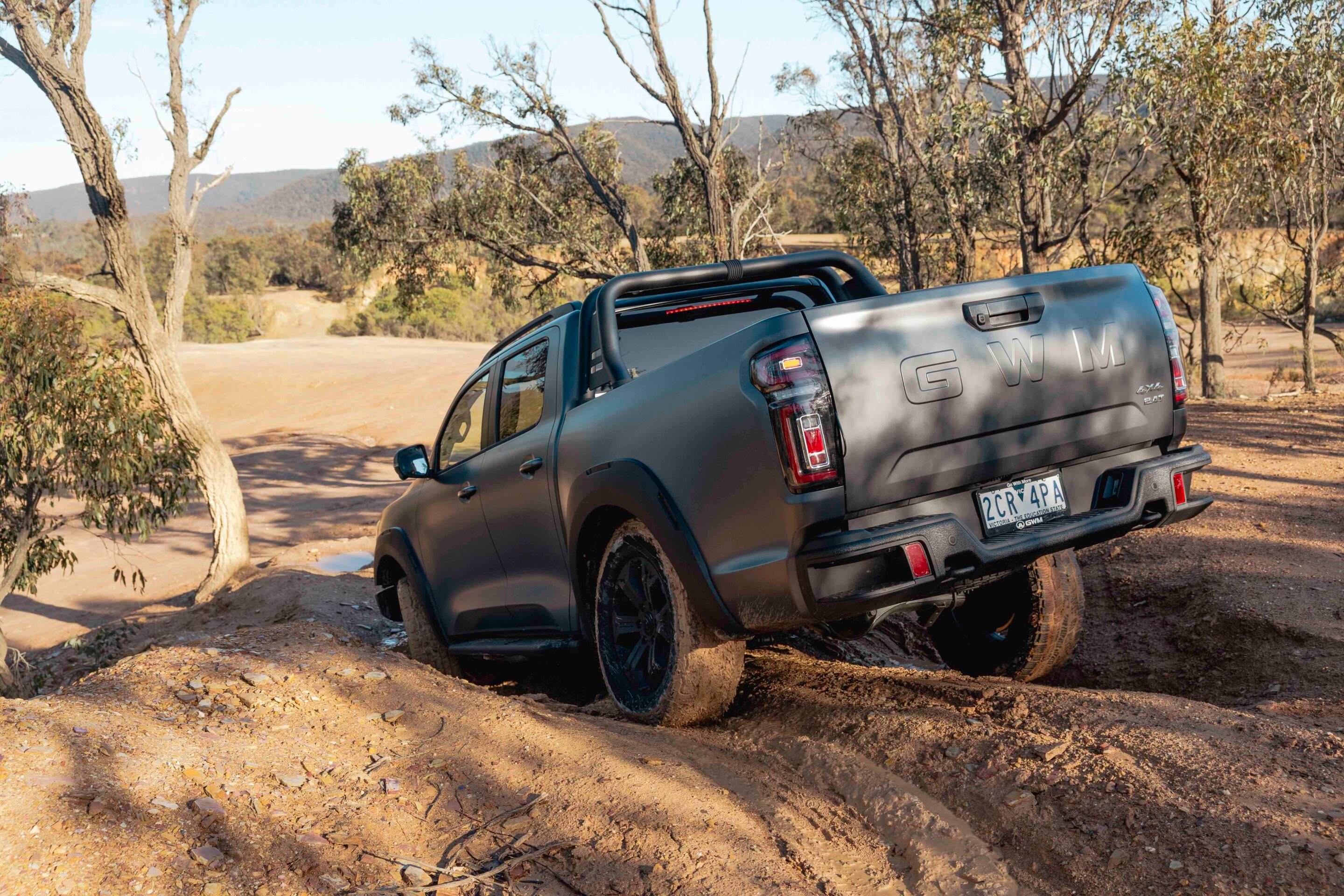
Of course, being a part-time 4×4, the Cannon XSR doesn’t have a centre diff – just select 4×4 High or 4×4 Low and equal drive is sent to the front and rear axles. Both front and rear lockers can be engaged at will, either individually or together. However, the rear locker proved temperamental and refused to engage, so we relied on the front locker to get the ute up the hill.
The rear locker continued to be temperamental when we moved on to the diagonally-opposed holes – a good test of wheel travel and traction. With water still sitting in the ruts, the track was slippery, but the Cannon made it through using just the front locker. Without the locker engaged, it struggled for traction. Eventually, the rear locker came to the party, and the Cannon walked up the track with ease, even with the tyre treads packed with mud.
The XSR’s metal side steps earned their keep here, touching down lightly as the suspension flexed over the undulating humps. They sit wide of the chassis, meaning you have to step over them every time you get in or out – especially if you want to keep your jeans clean. They’re a bit like the intake snorkel: yes, it creates some wind noise on the highway, but you tolerate it for the off-road advantages, including an extra 200mm of wading depth over the standard Cannon’s 500mm.
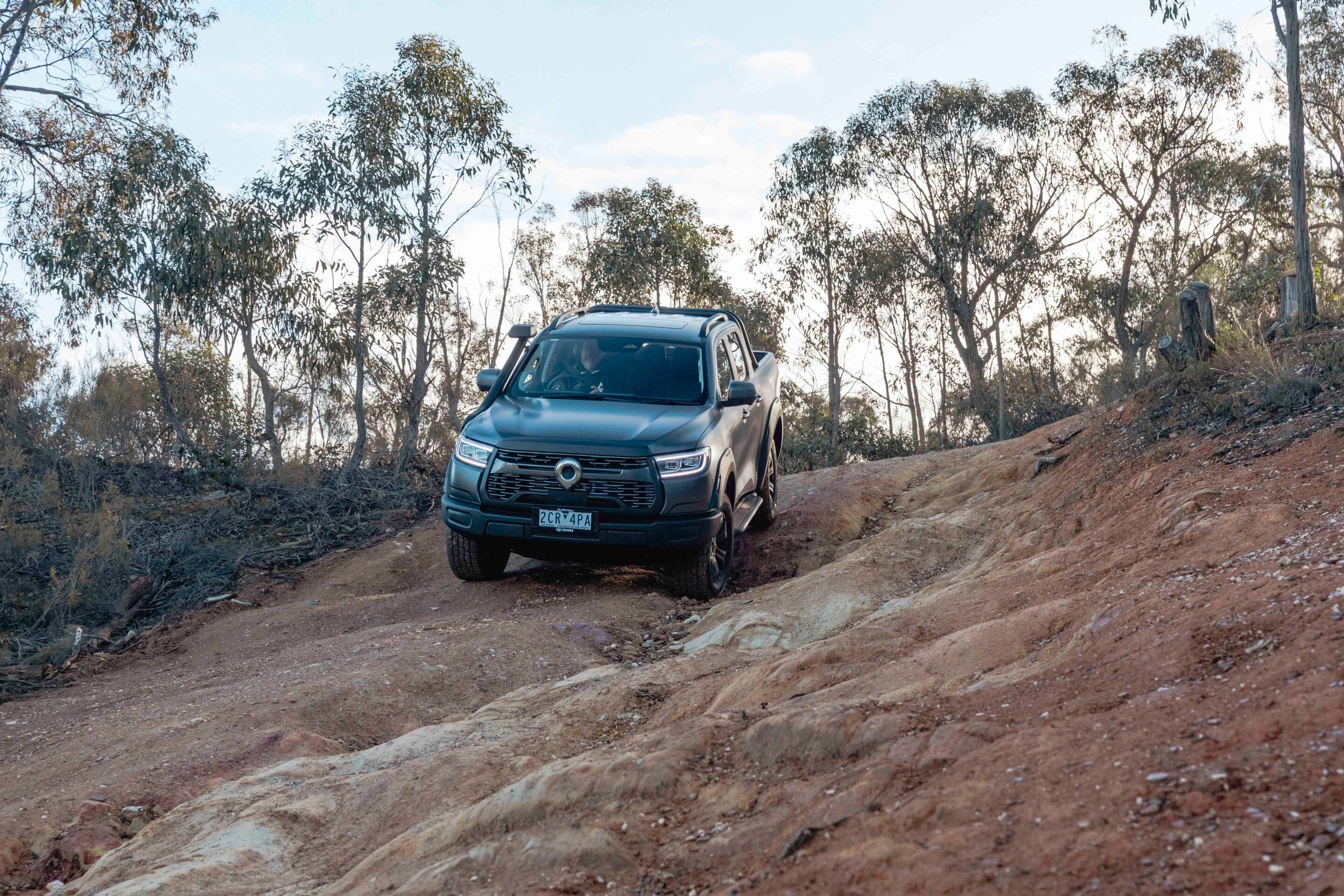
The independent front and live-axle, leaf-sprung rear suspension has a firm tune, resulting in a jiggly ride on rough roads and bordering on jarring over rutted tracks. That said, it offers decent wheel travel and should perform well when carrying a load.
Speaking of loads, the XSR retains the Cannon’s 3500kg towing capacity and offers an 875kg payload. The cargo tub is strictly workhorse spec, featuring a spray-in protective liner, four tie-down points, a fold-out tailgate step, and integrated steps in the rear bumper corners.
| Off-road specs | |
|---|---|
| Approach angle | 30 |
| Departure angle | 26 |
| Wading depth | 700mm |
Verdict
Like all dual-cab 4×4 utes, the Cannon XSR comes with compromises – but they’re some of the most polarising in the segment. From the missing safety tech (traded for off-road hardware), to the punchy but unpredictable acceleration and firm suspension tune, this ute is full of contradictions. You’d need to really value the off-road extras to choose the XSR over one of the five-star safety-rated variants in the Cannon lineup.
You could compare it to the Ford Ranger Raptor, which sacrifices payload and towing capacity in favour of exceptional off-road and high-speed performance. But the Raptor focuses its talents to perfection – even if it’s nearly twice the price of the XSR.
And for peace of mind, GWM backs the Cannon XSR with a seven-year/unlimited kilometre warranty, five years of 24/7 roadside assistance, and five-year capped-price servicing.
Specs
| 2025 GWM Cannon XSR | |
|---|---|
| Price | $49,990 (drive away for ABN holders); $51,990 (driveaway for private buyers) |
| Engine | I4 diesel |
| Capacity | 2.4L |
| Max power | 135kW @ 3600rpm |
| Max torque | 480Nm from 1500-2500rpm |
| Transmission | 9-speed automatic |
| 4×4 system | Part-time/dual-range, front and rear lockers |
| Construction | Double-cab ute body on ladder frame chassis |
| Front suspension | IFS with wishbones and coil springs |
| Rear suspension | Live axle with leaf springs |
| Tyres | 265/65R18 on alloy wheels |
| Kerb weight | 2330kg |
| GVM | 3205kg |
| GCM | 6300kg |
| Towing capacity | 3500kg |
| Payload | 875kg |
| Seats | 5 |
| Fuel tank | 78L (TBC) |
| ADR fuel consumption | 8.4L/100km |
Things we like
- Supportive seats
- Front and rear lockers standard
- Cheap price
Not so much
- Throttle/engine calibration
- Harsh suspension
- Missing safety tech
We recommend
-
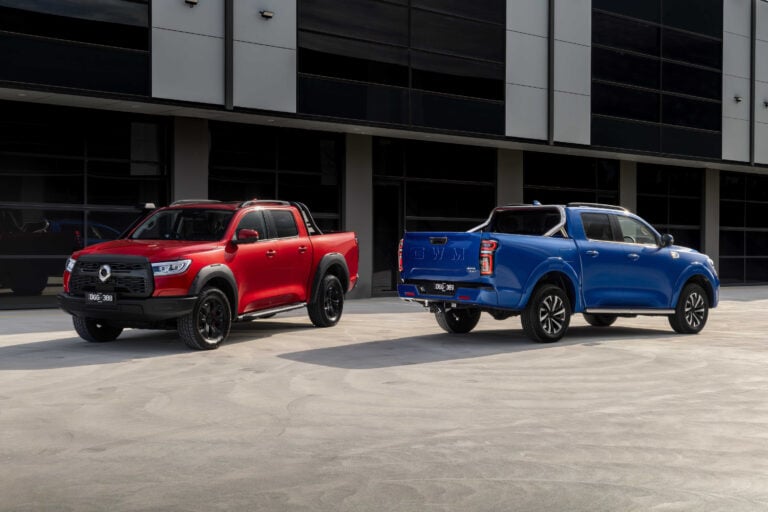 Reviews
Reviews2025 GWM Cannon review: Significant update fires new life into budget-friendly ute
Interior updates and a new driveline head up the changes to the 2025 GWM Cannon, to good effect
-
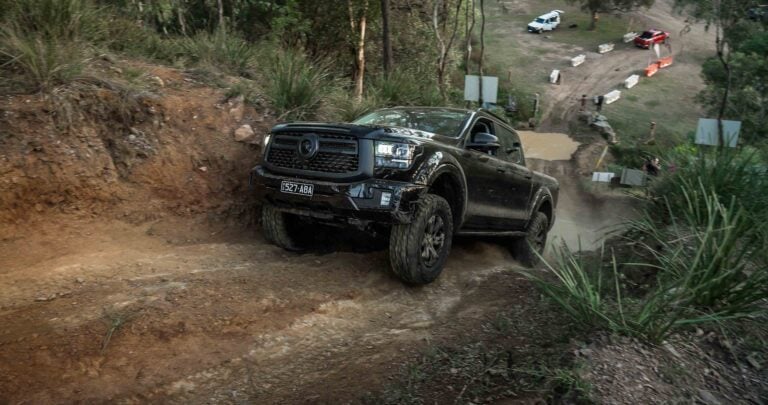 News
NewsGWM range successfully conquers Beer O’Clock Hill; Cannon Alpha first ever PHEV to reach the summit!
GWM makes history as its fleet, including the Cannon Alpha PHEV, conquers the infamous Beer O’Clock Hill
-
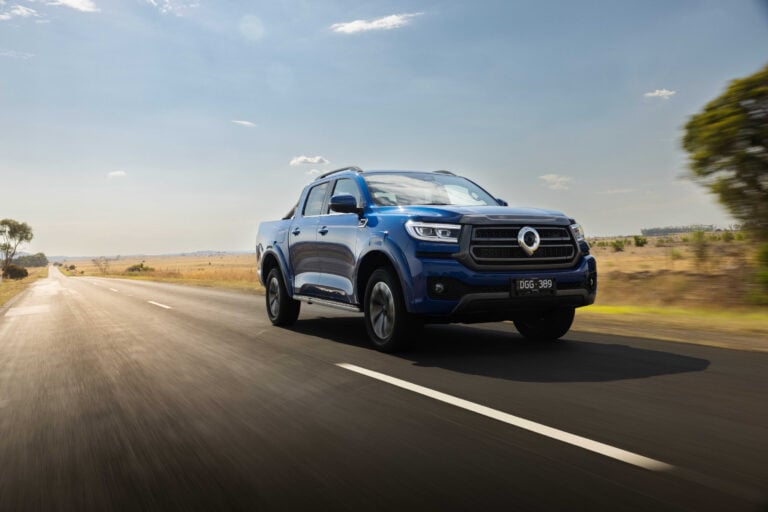 News
NewsGWM extends service intervals for 2025 Cannon and Tank 300 diesel models
GWM updates intervals to “align the diesel powertrain with market expectations”


